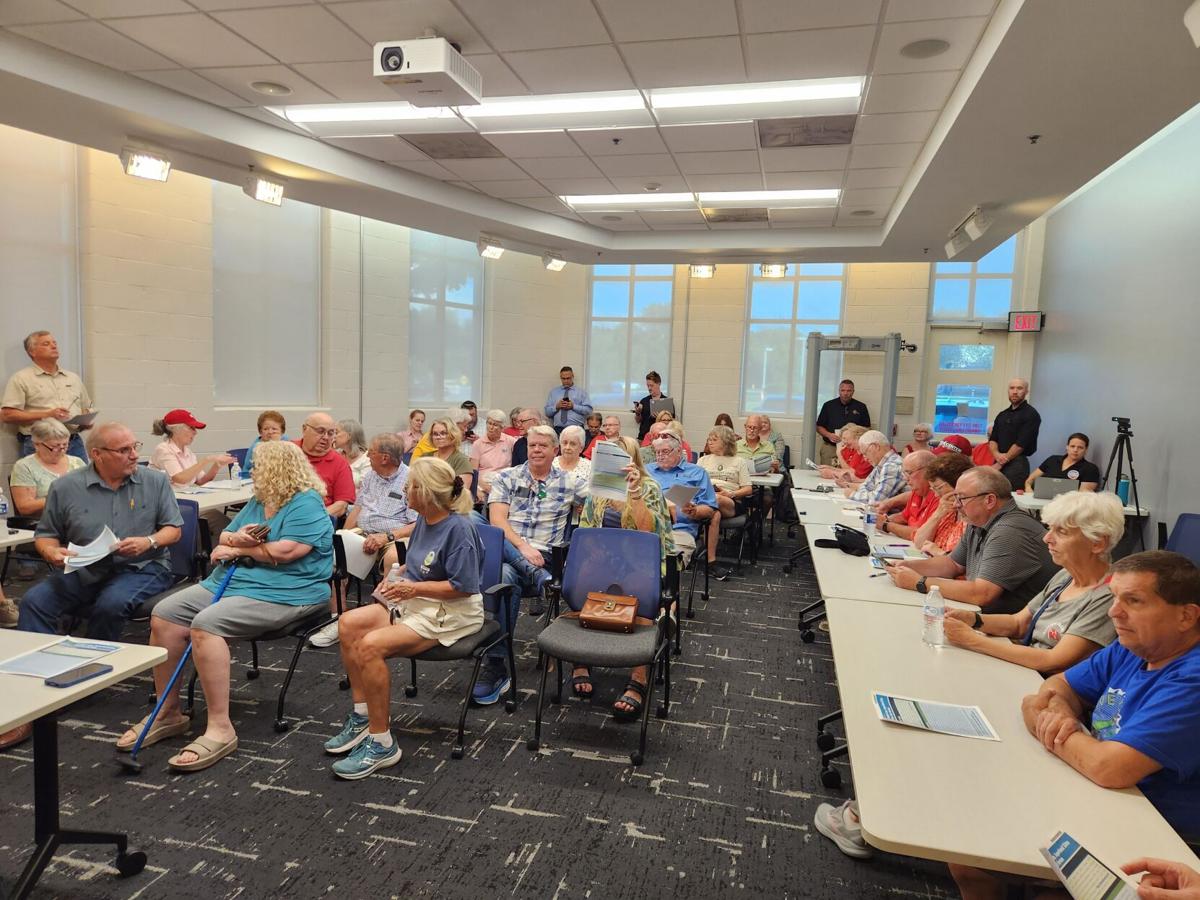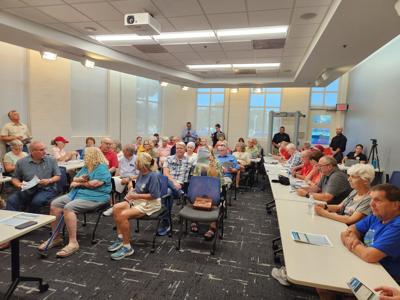ST. CHARLES — More than 100 people packed a meeting room Thursday night to hear federal officials talk about decades-old efforts to clean up groundwater contamination that haven’t gone as planned — and to offer their own opinions and ask questions.
Kara Elms, a leader in the St. Charles Clean Water Advocates group, told the crowd that action is needed or the contamination won’t be gone in another 20 years.
“It’s still going to be here unless we pressure them to do something and we need to be in their faces,” she said.
The U.S. Environmental Protection Agency has been working for decades to clean up the Superfund site, south of Highway 370, close to a well field where the city of St. Charles gets the majority of its drinking water.
But an EPA report released earlier this week concluded that the main cleanup tool doesn’t appear to be functioning as intended. Officials, however, have emphasized that repeated testing has shown that the city’s drinking water continues to be safe to consume.
People are also reading…
James Curry, an EPA engineer and the main speaker at the Thursday meeting, said the companies responsible for the cleanup are doing further testing and are likely to propose revised treatment options by the end of the year.
He said he expected EPA to make a decision on what will happen next by early 2026.
“We are discussing further actions at the site,” he said. “The remedy is not working as intended.”
Findett Corp. began operating in 1962 at the site, in an industrial area near Elm Point Road and Governor Drive. Findett and another company, Cadmus, both used chemicals later determined to be polluting the surrounding area due to inadequate waste management practices.
In the 1970s, the EPA became involved in testing, monitoring and overseeing the cleanup efforts, which included excavating and transfer of truckloads of contaminated soil to a facility in Oklahoma.
In 2021, the agency installed a pair of extraction and treatment system wells that pumped water out of the ground, purified it and then released it back into the city’s sewer system.
But the extraction well process has broken down periodically, often due to frozen or clogged pipes.
While the wells are supposed to purify out many different contaminants, the EPA says some continue to be found at the site. Among them are vinyl chloride and benzene, which can lead to cancer.
The new report found that the chemical concentrations are “above ecological concerns, but below human health concerns.”
Companies working on the cleanup now — Mallinckrodt, Bayer, Goodyear and ACF — are involved because of materials they or their predecessor companies sent for disposal or treatment at the Findett site.
Little new information was released at the Thursday night session, held by a community advisory committee in a meeting room at St. Charles police headquarters.
Instead, Curry answered various questions. For example, St. Charles resident Gene Carroll asked what would happen if the contaminated area ever was affected by a river flood. Curry responded by saying the contaminants are in groundwater many feet below soil and wouldn’t be spread by a flood.
People interviewed before and after the meeting gave various reasons for attending.
“We don’t want to be the next Coldwater Creek or West Lake Landfill,” said Lindsay Sutton, 41, referring to areas in north St. Lous County with radioactive contamination. “It’s our water. It’s our life source.”
Lesley Watson, 64, said she’s not overly worried but has concerns. She said she just wanted to hear the latest information on the issue.
Some attendees, like Rich Norton, 73, showed up after first going to a separate meeting Thursday night on a proposed data center near the cleanup area.



















